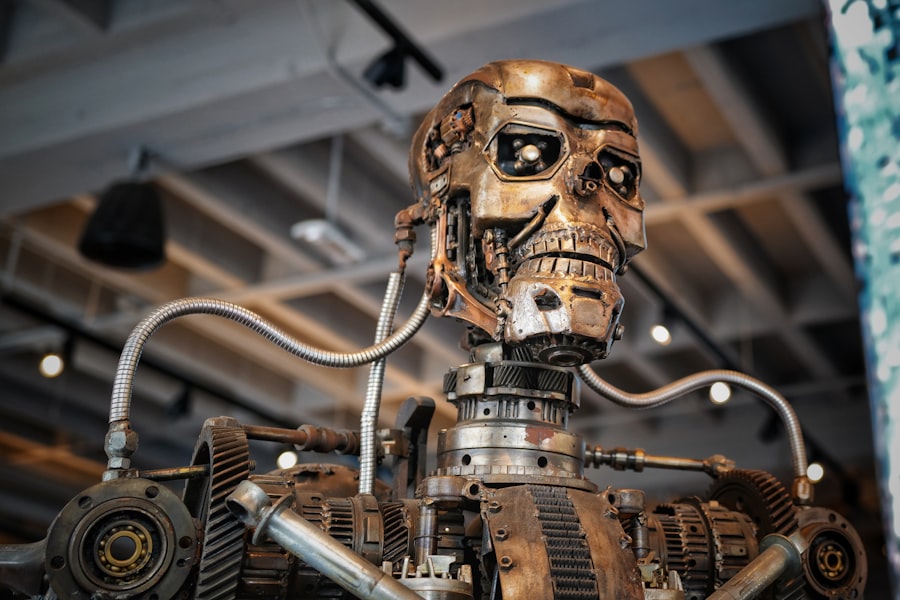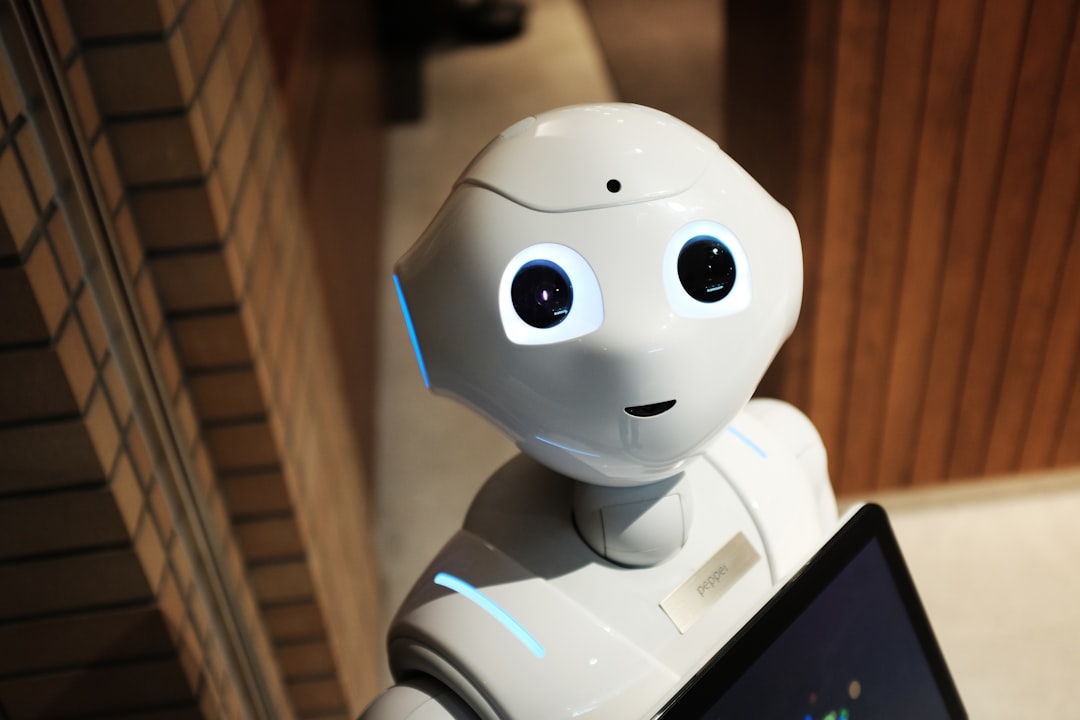As you navigate through the modern workplace, you may have noticed a significant shift in how tasks are performed. Automation, particularly through the use of robots and artificial intelligence, has become increasingly prevalent. This transformation is not merely a trend; it represents a fundamental change in the way businesses operate.
From manufacturing to customer service, automation is reshaping industries, enhancing efficiency, and redefining roles. As you observe this evolution, it’s essential to understand both the benefits and challenges that come with integrating robots into everyday work environments. The rise of automation is driven by technological advancements that allow machines to perform tasks once reserved for humans.
You might find it fascinating that robots can now handle complex processes, analyze vast amounts of data, and even interact with customers. This shift is not just about replacing human labor; it’s about augmenting capabilities and improving productivity. As you delve deeper into this topic, you will uncover the multifaceted implications of automation on the workforce and society as a whole.
Key Takeaways
- Automation in the workplace is on the rise, with robots being increasingly used to perform tasks previously done by humans.
- Advantages of using robots in the workplace include increased efficiency, precision, and the ability to perform dangerous or repetitive tasks.
- Disadvantages of using robots in the workplace include job displacement, potential loss of human touch, and the high initial cost of implementation.
- Automation has a significant impact on employment, leading to job displacement and the need for retraining and reskilling of workers.
- Ethical and moral considerations arise from the use of robots in the workplace, including issues of job loss, privacy, and the potential for misuse of technology.
Advantages of Using Robots in the Workplace
One of the most compelling advantages of using robots in the workplace is their ability to enhance productivity. You may have seen how robots can work tirelessly without breaks, fatigue, or the need for sleep. This relentless efficiency allows businesses to increase output and meet growing consumer demands.
In sectors like manufacturing, where precision and speed are paramount, robots can perform repetitive tasks with remarkable accuracy, reducing errors and waste. As a result, companies can achieve higher quality products while minimizing costs. Moreover, robots can take on dangerous or physically demanding jobs that pose risks to human workers.
In industries such as construction or mining, you might appreciate how robots can operate in hazardous environments, thereby safeguarding human lives. This not only protects workers but also allows them to focus on more strategic and creative tasks that require human insight and decision-making. The integration of robots can lead to a safer workplace overall, fostering an environment where innovation can thrive.
Disadvantages of Using Robots in the Workplace

Despite the numerous advantages, there are significant disadvantages associated with the rise of robots in the workplace that you should consider. One of the most pressing concerns is job displacement. As automation becomes more sophisticated, many roles that were once filled by humans are at risk of being eliminated.
You may find it unsettling to think about how entire industries could be transformed, leaving many workers without employment opportunities. This shift can lead to economic instability and increased inequality as those who are unable to adapt to new technologies may struggle to find work. Additionally, the reliance on robots can create a disconnect between employees and their work.
You might notice that as machines take over routine tasks, workers may feel less engaged or valued in their roles. This detachment can lead to decreased job satisfaction and morale, ultimately affecting productivity and company culture. It’s crucial to recognize that while robots can enhance efficiency, they cannot replicate the human touch that fosters collaboration, creativity, and emotional intelligence in the workplace.
Impact on Employment and Job Displacement
| Metrics | Data |
|---|---|
| Unemployment Rate | 8% |
| Job Displacement | 500,000 people |
| Employment Growth | -2% |
The impact of automation on employment is a complex issue that warrants careful examination. As you reflect on this topic, consider how certain sectors are more vulnerable to job displacement than others. For instance, routine jobs in manufacturing or data entry are often the first to be automated.
You may find it concerning that workers in these fields face significant challenges as they navigate a rapidly changing job market. The skills required for many traditional roles may no longer be relevant, leading to a skills gap that can hinder employability. However, it’s important to note that automation also creates new job opportunities.
As you explore this dynamic further, you will discover that while some jobs are lost, others emerge in fields such as robotics maintenance, programming, and data analysis. The challenge lies in ensuring that workers have access to training and education that equips them with the skills needed for these new roles. You might consider how society can support individuals in transitioning to new careers while addressing the emotional and financial toll of job displacement.
Ethical and Moral Considerations
As you delve into the ethical implications of automation, you may find yourself grappling with questions about responsibility and accountability.
You might ponder the moral dilemmas that arise when machines are programmed to prioritize efficiency over human welfare.
For instance, in healthcare settings where robots assist in patient care, ethical considerations about patient autonomy and consent become paramount. Furthermore, there is a growing concern about bias in algorithms used by automated systems. You may be aware that if these systems are trained on biased data, they can perpetuate existing inequalities and discrimination.
As you reflect on these issues, consider how society must establish ethical guidelines for the development and deployment of robotic technologies. It’s essential to ensure that automation serves humanity rather than undermines it.
The Role of Humans in a Robot-Driven Workplace

In a world increasingly dominated by robots, the role of humans remains vital. You might find it intriguing to explore how human skills complement robotic capabilities. While machines excel at processing data and performing repetitive tasks, humans bring creativity, empathy, and critical thinking to the table.
As you observe this interplay between humans and robots, consider how collaboration can lead to innovative solutions that neither could achieve alone. Moreover, your role as a worker may evolve rather than disappear entirely. You may find yourself taking on more strategic responsibilities that require emotional intelligence and interpersonal skills—qualities that robots cannot replicate.
As you adapt to this new landscape, embracing lifelong learning will be crucial. By continuously updating your skills and knowledge, you can position yourself as an invaluable asset in a robot-driven workplace.
The Potential for Collaboration Between Humans and Robots
The future of work lies not in competition between humans and robots but in collaboration. You may envision a workplace where humans and machines work side by side, leveraging each other’s strengths to achieve common goals. This collaborative approach can lead to increased efficiency and innovation as teams harness the unique capabilities of both parties.
For instance, in manufacturing settings, robots can handle repetitive tasks while humans focus on quality control and problem-solving. As you consider this potential for collaboration, think about how organizations can foster an environment that encourages teamwork between humans and robots. Training programs that emphasize collaboration skills will be essential as you navigate this new landscape.
By embracing a mindset of cooperation rather than competition, you can help create a workplace where both humans and robots thrive.
The Need for Regulation and Oversight
As automation continues to reshape industries, the need for regulation and oversight becomes increasingly apparent. You might recognize that without proper guidelines, the rapid deployment of robotic technologies could lead to unintended consequences. Issues such as job displacement, ethical concerns, and safety risks necessitate a framework that ensures responsible development and implementation of automation.
Governments and organizations must work together to establish regulations that protect workers’ rights while promoting innovation. You may find it essential for policymakers to engage with industry leaders and labor representatives to create balanced regulations that address the needs of all stakeholders. By fostering an environment of accountability and transparency, society can harness the benefits of automation while mitigating its risks.
The Economic Implications of Automation
The economic implications of automation are profound and multifaceted. As you analyze this topic, consider how increased productivity from robotic technologies can lead to economic growth. Businesses that adopt automation may experience lower operational costs and higher profit margins, which could translate into job creation in other sectors.
However, you should also be aware of the potential for economic disparity as certain industries thrive while others struggle to adapt. Moreover, automation has the potential to reshape global supply chains and trade dynamics. You might find it interesting how countries that embrace automation could gain a competitive edge in the global market.
However, this shift could also exacerbate inequalities between nations that have access to advanced technologies and those that do not. As you reflect on these economic implications, consider how society can ensure that the benefits of automation are distributed equitably.
The Future of Work in a World Dominated by Robots
As you look ahead to the future of work in a world increasingly dominated by robots, it’s essential to envision what this landscape might look like. You may imagine workplaces where humans collaborate seamlessly with machines, leveraging technology to enhance creativity and problem-solving capabilities. In this future scenario, adaptability will be key; workers will need to embrace change and continuously update their skills to remain relevant.
Additionally, you might consider how remote work trends could evolve alongside automation technologies. With robots handling routine tasks, employees may have more flexibility in their roles, allowing for greater work-life balance. However, this shift also raises questions about social interaction and team dynamics in a predominantly digital workspace.
As you ponder these possibilities, think about how society can cultivate a future where technology enhances human potential rather than diminishes it.
Finding a Balance Between Automation and Human Labor
In conclusion, as you reflect on the rise of automation in the workplace, it becomes clear that finding a balance between technology and human labor is crucial for a sustainable future. While robots offer numerous advantages in terms of efficiency and safety, they also present challenges related to job displacement and ethical considerations. You may recognize that embracing collaboration between humans and machines is essential for fostering innovation while preserving meaningful employment opportunities.
As society navigates this complex landscape, it’s vital to prioritize education and training programs that equip individuals with the skills needed for tomorrow’s workforce. By fostering an environment where humans and robots coexist harmoniously, we can harness the full potential of automation while ensuring that human labor remains valued and essential in our ever-evolving world.
An insightful article on this topic can be found on the How Wealth Grows website. The article delves into the potential economic benefits and challenges of automation, providing a balanced perspective on how robots could impact job markets and economic growth. For a deeper understanding of these dynamics, you can read the full article by visiting How Wealth Grows.
FAQs
What are the advantages of using robots to replace humans in certain tasks?
Robots can work continuously without breaks, reducing downtime and increasing productivity. They can also perform tasks in hazardous or dangerous environments, keeping humans out of harm’s way.
What are the disadvantages of using robots to replace humans in certain tasks?
Replacing humans with robots can lead to job displacement and unemployment. Additionally, robots may lack the ability to adapt to unexpected situations or make complex decisions that humans can.
What are some industries where robots are already replacing humans in certain tasks?
Industries such as manufacturing, agriculture, and logistics have already implemented robots to perform repetitive and physically demanding tasks. In healthcare, robots are being used for tasks such as surgery and patient care.
What are the ethical considerations of replacing humans with robots in the workforce?
Ethical considerations include the impact on employment and livelihoods, as well as the potential for robots to make biased or discriminatory decisions if not programmed and monitored carefully.
What are the potential long-term effects of replacing humans with robots in the workforce?
Long-term effects may include a shift in the types of skills and jobs that are in demand, as well as potential societal and economic impacts from widespread job displacement. Additionally, there may be implications for income inequality and social welfare systems.
